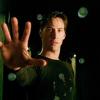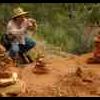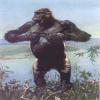Search the Community
Showing results for 'Dream'.
Found 7,590 results
-
luminosity as light of awareness? I don't have a reference point so i don't know what is clear light dream, you are keeping "lucid" and "clear" as two separate things without no connection.
-
And in the book it apparently gets you to the place where it is all like one big lucid dream, whether in the dream state while sleeping, or the dream state while awake. Since reading the Flower Ornament Sutra, I have found myself merging with Flower Glow, a boddisatva, in my mind. when I do this it is easy to realize that the waking state is a dream. I wish I didn't take sleeping pills at night, but I take Prozac and there's no sleeping at all with that stuff. So I take pills to get to sleep. I only get snippets of dreams, but they are often profound. But not lucid, although I have had one in the past. Such fascinating reading, and a fascinating concept (or truth). I look forward to the day I can get rid of all the pills, but as long as I'm living with another, I stay on them out of deference to our getting along. I've tried again and again to get off the Prozac and, even knowing it's all a dream, the physicality of withdrawing from that drug is just horrible, no matter how slowly you try to do it.
-
Lucid dreaming is just the first stage to penetrate the illusions of dreams. Or to penetrate the dream of samsara. There is the dream of clarity in which you receive precognition and information about the future. Or information about your spiritual path. In the clear light dream, you recognize rigpa because it is manifesting itself as the luminosity of light in your dream. The experience is similar to a Samadhi but you are experiencing it through and in between dream states and waking states.
-
you mean lucid dream?
-
Rigpa is the luminosity of the mind...light. When you see light within your mind, you know what Rigpa is. Light and luminosity aren't metaphors but an actual manifestation of the mind..the nature and the reality of the mind. I read the dream yoga book and with rigpa would only appear in the "clear light dream." I am going through the book Natural Perfection by Longchenpa right now.
-
Thank you Steve. I am rather awed by the Dream Yoga book, and in fact I am re-reading it again from the beginning. Even reading the introduction (after the initial reading) brings deeper level of understanding. I expect that this is one of those books that each time you read it, you see it with higher eyes. I appreciate your statement that it is something that is impossible to define - the only thing I could relate it to was experience. So perhaps the experience had nothing to do with rigpa. Perhaps I'll get a further glimpse (an undefinable one, for sure!) upon second reading. And this time I won't try to define it, Love to you.
-
It is my standard of heroism because I value my life as a primary. I did not imply that you will have the same standard, but neither am I speaking from arbitrary whim. In other words I know, regardless of wether you know it or not. It is as plain as 2+2=4 (and I did not choose that example without good reason). You do not deprive anyone of anything by driving on the road unless you stole the car and thus acquired a value by deceit or force.You cannot live your life through the mirror of another because you are no longer accepting your life as prime value. Don't confuse this with hedonism it is entirely the opposite. My morals are my morals, my virtues and values are mine and mine alone. However I choose to act will have to accord with holding my own life as the primary value. Existence is identity ; consciousness is identification. Therefore, I choose people to trade and associate with who also hold similar standards. This should be obvious-would you let your wife/daughter into the car with a known rapist. Would you buy from someone who has continually failed to honour their contracts. Would you get on a plane with a pilot who announces that he believes life is just a dream, that reality cannot be know, morals are subjective and so we shouldn't worry if he decides to fly into a cliff. I'm going to bet you want to get on a plane with a pilot who values their own life most highly and will do everything in their power to survive. I've tried explaining this many times but perhaps it's too radical to grasp, even though to my eyes it's so patently obvious it really should need explanation.
-
Regarding the whole "You'll stay a Ghost Immortal forever" statement. Here's the thing... NO THING IS FOREVER. "Reality" Is a Multi Level, Virtual Reality Simulation. The ancients didn't have Oculus Rift, so they used different nomenclature to describe the same thing. The creator, prime mover, and foundation of this simulation, is Consciousness (Which Is Immaterial= NoThing/Not Matter). I don't know If It's a translation Issue or what, but a lot of times, when various texts say "consciousness", what they're actually talking about Is the personality, the self Image. What most folks think of as "me". This is the false self, and not "The Real You". People are avatars/game characters In this simulation. The core Self of these characters Is Consciousness. What they normally think of as "Me" Is a mental construct. Their "Mind" Isn't even In the body, It's non-local. The brain is just a receiver. It Isn't the mind. We are NEVER "IN" the Body. A MAJOR misunderstanding/Error In a number of current systems. Like every "thing", bodies are mental constructs. Limited, finite, conditioned structures that consciousness utilizes as focal points. Most of the writers of these alchemical texts were aware of this. This is one of the "traps" I talked about previously. Intentionally set for folks not paying attention to what's being said. Western Science actually figured this out In the early part of the 20th century. And It disturbed the hell out of them. So they say,"quantum mechanics Is weird", and left It at that. If you "Wake Up" to this reality, you can then function as the core Self. You can then travel through all of the various levels of the simulation, with full Self Awareness. Call It what you will: "Rainbow Body", "Diamond Body", "The Body of Ausar (Osiris)", "Atman", "Metatron", "Adam Kadmon", etc. Just different models for the same thing. But these levels aren't forever. Your various personas/self images aren't forever. The only forever Is "I". So you wouldn't stay a ghost Immortal forever. That's just silly. You don't stay any thing forever. We're affected by these various states, to the extent that we stay attached to the human self Image. A "Ghost" Is what In Ancient Egypt was known as the "Khaibit". Just the Qi/breath/vapor/plasma that moves our vehicle, with some remnant memories (If you hadn't "awaken" before you transition (aka Death), you eventually lose your memories/personality, "Dying The Second Death". If "you" get a chance to Incarnate again, you don't remember any of this. It's like waking from a dream. People with more energy do remember previous lives, vividly In fact, and there are many documented accounts In various cultures throughout the world. The various "Immortal" levels, are just various levels of wakefulness. A Ghost Immortal could stay that way for 10 months, or 10 years, relative to our reference of time (which people have to remember, Is different on the different levels of existence). "Forever" Is relative. 100 years to you, Is 1 nanosecond for some other being. Wiki Powers ACTIVATE!... "Anicca or impermanence is understood by Buddhists as one of the three marks of existence, the others being dukkha (unsatisfactoriness) and anatta (non-selfhood). All things in the universe are understood by Buddhists to be characterised by these three marks of existence. According to the impermanence doctrine, human life embodies this flux in the aging process, the cycle of birth and rebirth (samsara), and in any experience of loss. This is applicable to all beings and their environs including devas (mortal gods). The Buddha taught that because conditioned phenomena are impermanent, attachment to them becomes the cause for future suffering (dukkha)." Sometimes, even the writers of these wonderful texts forget the basics. Every Thing Ends. It may take 10 seconds, or 10 Million Eons to do so, but It does. All great stories end. And then "you" aka "I" create a NEW one. Because I, Consciousness, NEVER End. We are all Incredibly blessed to even be having this conversation. To even know about these realities. 99.9% of the people on this planet don't. So most of them will lose consciousness, and wake up as yet another persona, probably the slave of another man, In whatever new dream reality the people In power In their world create. I just dealt with a friend's mother transitioning. They began showing up In my friend, and her daughter's dreams (Theta brain wave state Is the location of the "Bardo", "Duat", "Heaven", "Hell", etc.), saying It was cold, dark, and that they needed help. She transitioned In an upset state, according to readings that I did. But she's got to go through that now. Her belief system didn't show her what she needed to do In life, to avoid this. And she's going to have to lose consciousness because of It, and forget her life. Don't let that be YOU. I know I'm not. Just do the work to wake up. Build up to 3 to 4 hours of practice (both movement, and stillness work) 365 days a year, for 10 years, or so, (your mileage will vary), and You'll find out the details yourself directly, If you do. Everything else is just opinion, belief, and egoistic posturing, thus useless. Cheers!
-
I agree with your understanding as well. It is the awareness of self, the self realization realized from a constant series of 'Aha's' that create the type of awareness we're speaking of here. For the past 34 years, I've had to pull my inner covers to be in a state of recovery. Your words couldn't be truer to me. . Interestingly, I've heard this voice 3 times. The first time was when I had my moment of alcoholic clarity, when I had my boyfriend pull the car over because I had to vomit, and the wind blew it back into the car all over him. I heard a male voice in my ear say "You're so much better than this". (And it wasn't the fellow with vomit dripping off of him) The second time was after I'd been sober for about a year, and one more time I was sitting in a Christmas service in a Christian church, hearing the same old dusty nativity story once again. I distinctly heard a male voice say into my ear "This is so dead". I even looked around to see if someone had come forward and whisper this in my ear, and nobody had. I haven't been to a Christian church since then, other than occasionally to a Southern Baptist church in Ohio that I support. That voice caused me to broaden my spiritual search, resulting in me being here with you. This was the third time I heard the voice - when I was in the depression and it told me that I had a choice. Again, it was a male voice, living under the space of ego. It was real. To me, this is the voice of My Truth - not saying it's absolute truth for anybody else - but it is my truth. It is the ocean of awareness derived from uncovering self, that sense that dwells underneath. it is emotionless and every time I hear it, I know it to be my truth. It is absolutely authoritative and it is useless to second guess it. But it just struck me as I was recently reading about dream yoga and the concept of rigpa that it occurred to me that the voice I've heard on those occasions could be connected to rigpa somehow. Or not. So maybe to refer to this as a type of rigpa is absolute incorrect. I do not pretend to be a Buddhist - I just love reading everything, that's all. And sometimes the tumblers just fall into place when you read or hear something in particular, and you recognize it. That's why I felt the proximity to what the Rinpoche was describing as rigpa.
-

Seeing, Recognising & Maintaining One's Enlightening Potential
manitou replied to C T's topic in Buddhist Textual Studies
Beautifully said. It must be lived, moment to moment, so that the preparations are complete at the time of the ensuing bardo. Intellectual reformulations and restatements help us understand, but must be tempered with the concept that life must be approached like a dream, and our actions in some way must reflect the aloofness of the emptiness in which we dwell. This is the practice, as I see it. And approaching the phenomena with a loving attitude makes it all so much nicer, allowing lesser emotions to rise and fall. -

Seeing, Recognising & Maintaining One's Enlightening Potential
manitou replied to C T's topic in Buddhist Textual Studies
And yet if one is too decisive with one's practice it too will become burdensome, rote - and of little value. Perhaps the gentle merger with one's higher guru and maintaining awareness of the dream, whether at night or during the day, is less structured and of the same value - albeit a different approach - as decisiveness. And there's always the possibility that I have totally missed the essence of your statement.... -
I do realize that rigpa is not an entity at all, but rather the true nature of the individual. Whatever this was, it lacked emotion of any kind, and yet it was a Truth. I knew instinctively that this voice was right, that my depression was of my own choice, that I had my own egoic reasons for being in the depression and staying there (although Western medicine tells me that I am clinically depressed and require medication); but i do realize how sub-standard and unrefined Western medicine is compared to the wisdom and experience of the Eastern traditions. The book I am reading, 'The Tibetan Yogas of Dream and Sleep', by the aforementioned Rinpoche, defines rigpa fully as: 'Literally, "awareness" or "knowing". In the Dzoghen teachings, rigpa means awareness of the truth, innate awareness, the true nature of the individual.' It is from this perspective, the above definition, that the connect-up occurred in my mind, to that which happened some years ago. My memory sprang immediately to that experience of hearing the voice of Knowing, and knowing that it was the voice of truth. The thing that sticks with me the most is the lack of emotion contained in that part of me that clearly spoke to me. As I said previously, it just felt like a Dweller; a wisdom within that was separate from my tremendously emotional self at that moment. It Knew. This is why the phenomenon seemed to match up with the definition. I do understand that it is not literally an entity within. That it is nowhere, as All is Awareness and interconnectedness, that all our Awareness combined is the same Awareness. However, my Awareness was so clouded by the egoic wallowing of self-pity, I had strayed so far from my 'true nature', the contrast was so great - that I was given the opportunity (or rather, heard the opportunity) to see the difference between the two. Between what was real and what was unreal. If my understanding of rigpa is incorrect, please set me straight. And if my understanding is wrong, then how strange that my memory so readily recognized and snapped to an occurrence years back, instantaneously recognizing it as I read it.
-
Hello there Dao Bums, Here is my introductory post, I have lurked the boards for a while and need to do this apparently, so I can download the .pdf attachments that caught my eye lol. About me - I am 26, male and live in Australia. I got sucked into the spirituality game several years ago by stumbling upon an online group and followed the practices with some results. Since then I have been working upon myself in the spiral fashion, retreading the same ground/self/issues/etc with a higher perspective and experience each time. In my studies Taoism caught my eye, mainly due to the symbolic cyphers... I love riddles... and for the past two years I know without knowing da Dao is where 'it' is at... I forgot the rest, especially the 'plz steal and harness my chi' guru worship egregores and focus on this arena. Steadily amassing a daoist library searching for gold elixir nuggets and to corroborate personal experiences in meditation, and collecting practical methods. Atm I am experimenting with energetic shapeshifting and dream working- where I am taught most of my lessons, the hardest part is actually getting out of bed to write them down before they slip away. Cheers, I continue to look forward to lurking, with download privileges plz mods, roflmao, Shannon.
-
To notice and remember coincidence is to hone awareness. Whether random or the universes subtle message system, its a good skill to develop. I collect old 'wheaty' pennies. I've found 2 of them the last 2 months, a 1936 and a 1946. They're increasingly rare enough so that people go years without finding one. My secret.. I like them, I look.. I've collected a few hundred of them in change. I find coins on the street all the time. Today it was some strange oriental coin. I'll ponder what message the find might represent, with dimes being bad luck. I don't always follow it, but I like the philosophy to treat waking life more as a dream, and take dreams as serious messages.
-
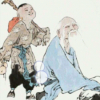
Interesting article on the I Ching and its translations into Western languages
Walker posted a topic in Daoist Discussion
http://www.chinafile.com/library/nyrb-china-archive/what-i-ching What Is the I Ching? Eliot Weinberger February 25, 2016 The I Ching has served for thousands of years as a philosophical taxonomy of the universe, a guide to an ethical life, a manual for rulers, and an oracle of one’s personal future and the future of the state. It was an organizing principle or authoritative proof for literary and arts criticism, cartography, medicine, and many of the sciences, and it generated endless Confucian, Taoist, Buddhist, and, later, even Christian commentaries, and competing schools of thought within those traditions. In China and in East Asia, it has been by far the most consulted of all books, in the belief that it can explain everything. In the West, it has been known for over three hundred years and, since the 1950s, is surely the most popularly recognized Chinese book. With its seeming infinitude of applications and interpretations, there has never been a book quite like it anywhere. It is the center of a vast whirlwind of writings and practices, but is itself a void, or perhaps a continually shifting cloud, for most of the crucial words of the I Ching have no fixed meaning. The origin of the text is, as might be expected, obscure. In the mythological version, the culture hero Fu Xi, a dragon or a snake with a human face, studied the patterns of nature in the sky and on the earth: the markings on birds, rocks, and animals, the movement of clouds, the arrangement of the stars. He discovered that everything could be reduced to eight trigrams, each composed of three stacked solid or broken lines, reflecting the yin and yang, the duality that drives the universe. The trigrams themselves represented, respectively, heaven, a lake, fire, thunder, wind, water, a mountain, and earth (see illustration below). From these building blocks of the cosmos, Fu Xi devolved all aspects of civilization—kingship, marriage, writing, navigation, agriculture—all of which he taught to his human descendants. Here mythology turns into legend. Around the year 1050 BCE, according to the tradition, Emperor Wen, founder of the Zhou dynasty, doubled the trigrams to hexagrams (six-lined figures), numbered and arranged all of the possible combinations—there are 64—and gave them names. He wrote brief oracles for each that have since been known as the “Judgments.” His son, the Duke of Zhou, a poet, added gnomic interpretations for the individual lines of each hexagram, known simply as the “Lines.” It was said that, five hundred years later, Confucius himself wrote ethical commentaries explicating each hexagram, which are called the “Ten Wings” (“wing,” that is, in the architectural sense). The archaeological and historical version of this narrative is far murkier. In the Shang dynasty (which began circa 1600 BCE) or possibly even earlier, fortune-telling diviners would apply heat to tortoise shells or the scapulae of oxen and interpret the cracks that were produced. Many of these “oracle bones”—hundreds of thousands of them have been unearthed—have complete hexagrams or the numbers assigned to hexagrams incised on them. Where the hexagrams came from, or how they were interpreted, is completely unknown. Sometime in the Zhou dynasty—the current guess is around 800 BCE—the 64 hexagrams were named, and a written text was established, based on the oral traditions. The book became known as the Zhou Yi (Zhou Changes). The process of consultation also evolved from the tortoise shells, which required an expert to perform and interpret, to the system of coins or yarrow stalks that anyone could practice and that has been in use ever since. Three coins, with numbers assigned to heads or tails, were simultaneously tossed; the resulting sum indicated a solid or broken line; six coin tosses thus produced a hexagram. In the case of the yarrow stalks, 50 were counted out in a more laborious procedure to produce the number for each line. (Wikimedia Commons) A diagram of ‘I Ching’ hexagrams sent to Gottfried Wilhelm Leibniz from Joachim Bouvet. The Arabic numerals were added by Leibniz. By the third century BCE, with the rise of Confucianism, the “Ten Wings” commentaries had been added, transforming the Zhou Yi from a strictly divinatory manual to a philosophical and ethical text. In 136 BCE, Emperor Wu of the Han dynasty declared it the most important of the five canonical Confucian books and standardized the text from among various competing versions (some with the hexagrams in a different order). This became the I Ching, the Book (or Classic) of Change, and its format has remained the same since: a named and numbered hexagram, an arcane “Judgment” for that hexagram, an often poetic interpretation of the image obtained by the combination of the two trigrams, and enigmatic statements on the meaning of each line of the hexagram. Confucius almost certainly had nothing to do with the making of the I Ching, but he did supposedly say that if he had another hundred years to live, 50 of them would be devoted to studying it. For two millennia, the I Ching was the essential guide to the universe. In a philosophical cosmos where everything is connected and everything is in a state of restless change, the book was not a description of the universe but rather its most perfect microcosm. It represented, as one Sinologist has put it, the “underpinnings of reality.” Its 64 hexagrams became the irrevocable categories for countless disciplines. Its mysterious “Judgments” were taken as kernels of thought to be elaborated, in the “Ten Wings” and countless commentaries, into advice to rulers on how to run an orderly state and to ordinary people on how to live a proper life. It was a tool for meditation on the cosmos and, as a seamless piece of the way of the world, it also revealed what would be auspicious or inauspicious for the future. In the West, the I Ching was discovered in the late 17th century by Jesuit missionaries in China, who decoded the text to reveal its Christian universal truth: hexagram number one was God; two was the second Adam, Jesus; three was the Trinity; eight was the members of Noah’s family; and so on. Leibniz enthusiastically found the universality of his binary system in the solid and broken lines. Hegel—who thought Confucius was not worth translating—considered the book “superficial”: “There is not to be found in one single instance a sensuous conception of universal natural or spiritual powers.” The first English translation was done by Canon Thomas McClatchie, an Anglican cleric in Hong Kong. McClatchie was a Reverend Casaubon figure who, in 1876, four years after the publication of Middlemarch, found the key to all mythologies and asserted that the I Ching had been brought to China by one of Noah’s sons and was a pornographic celebration of a “hermaphroditic monad,” elsewhere worshiped among the Chaldeans as Baal and among Hindus as Shiva. James Legge, also a missionary in Hong Kong and, despite a general loathing of China, the first important English-language translator of the Chinese classics, considered McClatchie “delirious.” After 20 interrupted years of work—the manuscript was lost in a shipwreck in the Red Sea—Legge produced the first somewhat reliable English translation of the I Ching in 1882, and the one that first applied the English word for a six-pointed star, “hexagram,” to the Chinese block of lines. Professionally appalled by what he considered its idolatry and superstition, Legge nevertheless found himself “gradually brought under a powerful fascination,” and it led him to devise a novel theory of translation. Since Chinese characters were not, he claimed, “representations of words, but symbols of ideas,” therefore “the combination of them in composition is not a representation of what the writer would say, but of what he thinks.” The translator, then, must become “en rapport” with the author, and enter into a “seeing of mind to mind,” a “participation” in the thoughts of the author that goes beyond what the author merely said. Although the I Ching has no author, Legge’s version is flooded with explanations and clarifications parenthetically inserted into an otherwise literal translation of the text. Herbert Giles, the next important English-language translator after Legge, thought the I Ching was “apparent gibberish”: “This is freely admitted by all learned Chinese, who nevertheless hold tenaciously to the belief that important lessons could be derived from its pages if only we had the wit to understand them.” Arthur Waley, in a 1933 study—he never translated the entire book—described it as a collection of “peasant interpretation” omens to which specific divinations had been added at a later date. Thus, taking a familiar Western example, he wrote that the omen “red sky in the morning, shepherds take warning” would become the divination “red sky in the morning: inauspicious; do not cross the river.” Waley proposed three categories of omens—“inexplicable sensations and involuntary movements (‘feelings,’ twitchings, stumbling, belching and the like)…those concerning plants, animals and birds…[and] those concerning natural phenomena (thunder, stars, rain etc.)”—and found examples of all of them in his decidedly unmetaphysical reading of the book. Joseph Needham devoted many exasperated pages to the I Ching in Science and Civilization in China as a “pseudo-science” that had, for centuries, a deleterious effect on actual Chinese science, which attempted to fit exact observations of the natural and physical worlds into the “cosmic filing-system” of the vague categories of the hexagrams. It was Richard Wilhelm’s 1924 German translation of the I Ching and especially the English translation of the German by the Jungian Cary F. Baynes in 1950 that transformed the text from Sinological arcana to international celebrity. Wilhelm, like Legge, was a missionary in China, but unlike Legge was an ardent believer in the Wisdom of the East, with China the wisest of all. The “relentless mechanization and rationalization of life in the West” needed the “Eastern adhesion to a natural profundity of soul.” His mission was to “join hands in mutual completion,” to uncover the “common foundations of humankind” in order to “find a core in the innermost depth of the humane, from where we can tackle…the shaping of life.” Wilhelm’s translation relied heavily on late, Song Dynasty Neo-Confucian interpretations of the text. In the name of universality, specifically Chinese referents were given general terms, and the German edition had scores of footnotes noting “parallels” to Goethe, Kant, the German Romantics, and the Bible. (These were dropped for the English-language edition.) The text was oddly presented twice: the first time with short commentaries, the second time with more extended ones. The commentaries were undifferentiated amalgams of various Chinese works and Wilhelm’s own meditations. (Needham thought that the edition belonged to the “Department of Utter Confusion”: “Wilhelm seems to be the only person…who knew what it was all about.”) The book carried an introduction by Carl Jung, whom Wilhelm considered “in touch with the findings of the East [and] in accordance with the views of the oldest Chinese wisdom.” (One proof was Jung’s male and female principles, the anima and the animus, which Wilhelm connected to yin and yang.) Some of Jung’s assertions are now embarrassing. (“It is a curious fact that such a gifted and intelligent people as the Chinese have never developed what we call science.”) But his emphasis on chance—or synchronicity, the Jungian, metaphysical version of chance—as the guiding principle for a sacred book was, at the time, something unexpected, even if, for true believers, the I Ching does not operate on chance at all. The Wilhelm/Baynes Bollingen edition was a sensation in the 1950s and 1960s. Octavio Paz, Allen Ginsberg, Jorge Luis Borges, and Charles Olson, among many others, wrote poems inspired by its poetic language. Fritjof Capra in The Tao of Physics used it to explain quantum mechanics and Terence McKenna found that its geometrical patterns mirrored the “chemical waves” produced by hallucinogens. Others considered its binary system of lines a prototype for the computer. Philip K. Dick and Raymond Queneau based novels on it; Jackson Mac Low and John Cage invented elaborate procedures using it to generate poems and musical compositions. It is not difficult to recuperate how thrilling the arrival of the I Ching was both to the avant-gardists, who were emphasizing process over product in art, and to the anti-authoritarian counterculturalists. It brought, not from the soulless West, but from the mysterious East, what Wilhelm called “the seasoned wisdom of thousands of years.” It was an ancient book without an author, a cyclical configuration with no beginning or end, a religious text with neither exotic gods nor priests to whom one must submit, a do-it-yourself divination that required no professional diviner. It was a self-help book for those who wouldn’t be caught reading self-help books, and moreover one that provided an alluring glimpse of one’s personal future. It was, said Bob Dylan, “the only thing that is amazingly true.” The two latest translations of the I Ching couldn’t be more unalike; they are a complementary yin and yang of approaches. John Minford is a scholar best known for his work on the magnificent five-volume translation of The Story of the Stone (or The Dream of the Red Chamber), universally considered the greatest Chinese novel, in a project begun by the late David Hawkes. His I Ching, obviously the result of many years of study, is over 800 pages long, much of it in small type, and encyclopedic. Minford presents two complete translations: the “Bronze Age Oracle,” a recreation of the Zhou dynasty text before any of the later Confucian commentaries were added to it, and the “Book of Wisdom,” the text as it was elucidated in the subsequent centuries. Each portion of the entries for each hexagram is accompanied by an exegesis that is a digest of the historical commentaries and the interpretations by previous translators, as well as reflections by Minford himself that link the hexagram to Chinese poetry, art, ritual, history, philosophy, and mythology. It is a tour de force of erudition, almost a microcosm of Chinese civilization, much as the I Ching itself was traditionally seen. David Hinton is, with Arthur Waley and Burton Watson, the rare example of a literary Sinologist—that is, a classical scholar thoroughly conversant with, and connected to, contemporary literature in English. A generation younger than Watson, he and Watson are surely the most important American translators of Chinese classical poetry and philosophy in the last 50 years. Both are immensely prolific, and both have introduced entirely new ways of translating Chinese poetry. Hinton’s I Ching is equally inventive. It is quite short, with only two pages allotted to each hexagram, presents a few excerpts from the original “Ten Wings” commentaries, but has nothing further from Hinton himself, other than a short introduction. Rather than consulted, it is meant to be read cover to cover, like a book of modern poetry—though it should be quickly said that this is very much a translation, and not an “imitation” or a postmodern elaboration. Or perhaps its fragments and aphorisms are meant to be dipped into at random, the way one reads E.M. Cioran or Elias Canetti. Hinton adheres to a Taoist or Ch’an (Zen) Buddhist reading of the book, unconcerned with the Confucian ethical and political interpretations. His I Ching puts the reader into the Tao of nature: that is, the way of the world as it is exemplified by nature and embodied by the book. He takes the mysterious lines of the judgments as precursors to the later Taoist and Ch’an writings: “strategies…to tease the mind outside workaday assumptions and linguistic structures, outside the limitations of identity.” The opposite of Wilhelm’s Jungian self-realization, it is intended as a realization of selflessness. Moreover, it is based on the belief that archaic Chinese culture, living closer to the land—and a land that still had a great deal of wilderness—was less estranged from nature’s Tao. To that end, Hinton occasionally translates according to a pictographic reading of the oldest characters, a technique first used by Ezra Pound in his idiosyncratic and wonderful version of the earliest Chinese poetry anthology, the Book of Songs, which he titled The Confucian Odes. For example, Hinton calls Hexagram 32—usually translated as “Endurance” or “Duration” or “Perseverance”—“Moondrift Constancy,” because the character portrays a half-moon fixed in place with a line above and below it. The character for “Observation” becomes “Heron’s-Eye Gaze,” for indeed it has a heron and an eye in it, and nothing watches more closely than a waterbird. Hinton doesn’t do this kind of pictographic reading often, but no doubt Sinologists will be scandalized. The difference between the two translations—the differences among all translations—is apparent if we look at a single hexagram: number 52, called Gen. Minford translates the name as “Mountain” for the hexagram is composed of the two Mountain trigrams, one on top of the other. His translation of the text throughout the book is minimalist, almost telegraphese, with each line centered, rather than flush left. He has also made the exceedingly strange decision to incorporate tags in Latin, taken from the early Jesuit translations, which he claims can help us relate to this deeply ancient and foreign text, can help create a timeless mood of contemplation, and at the same time can evoke indirect connections between the Chinese traditions of Self-Knowledge and Self-Cultivation…and…the long European tradition of Gnosis and spiritual discipline. In the “Book of Wisdom” section, he translates the “Judgment” for Hexagram 52 as: The back Is still As a Mountain; There is no body. He walks In the courtyard, Unseen. No Harm, Nullum malum. This is followed by a long and interesting exegesis on the spiritual role and poetic image of mountains in the Chinese tradition. Hinton calls the hexagram “Stillness” and translates into prose: “Stillness in your back. Expect nothing from your life. Wander the courtyard where you see no one. How could you ever go astray?” Wilhelm has “Keeping Still, Mountain” as the name of the hexagram. His “Judgment” reads: KEEPING STILL. Keeping his back still So that he no longer feels his body. He goes into the courtyard And does not see his people. No blame. He explains: True quiet means keeping still when the time has come to keep still, and going forward when the time has come to go forward. In this way rest and movement are in agreement with the demands of the time, and thus there is light in life. The hexagram signifies the end and beginning of all movement. The back is named because in the back are located all the nerve fibers that mediate movement. If the movement of these spinal nerves is brought to a standstill, the ego, with its restlessness, disappears as it were. When a man has thus become calm, he may turn to the outside world. He no longer sees in it the struggle and tumult of individual beings, and therefore he has that true peace of mind which is needed for understanding the great laws of the universe and for acting in harmony with them. Whoever acts from these deep levels makes no mistakes. The Columbia University Press I Ching, translated by Richard John Lynn and billed as the “definitive version” “after decades of inaccurate translations,” has “Restraint” for Gen: “Restraint takes place with the back, so one does not obtain [sic] the other person. He goes into that one’s courtyard but does not see him there. There is no blame.” Lynn’s odd explanation, based on the Han dynasty commentator Wang Bi, is that if two people have their backs turned, “even though they are close, they do not see each other.” Therefore neither restrains the other and each exercises self-restraint. The six judgments for the six individual lines of Hexagram 52 travel through the body, including the feet, calves, waist, trunk, and jaws. (Wilhelm weirdly and ahistorically speculates that “possibly the words of the text embody directions for the practice of yoga.”) Thus, for line 2, Hinton has: “Stillness fills your calves. Raise up succession, all that will follow you, or you’ll never know contentment.” Minford translates it as: “The calves are/Still as a Mountain./Others/Are not harnessed./The heart is heavy.” He explains: “There is a potential healing, a Stillness. But the Energy of Others…cannot be mastered and harnessed. No Retreat is possible, only a reluctant acceptance. One lacks the foresight for Retreat. Beware.” Wilhelm’s version is: “Keeping his calves still./He cannot rescue him whom he follows./His heart is not glad.” This is glossed as: The leg cannot move independently; it depends on the movement of the body. If a leg is suddenly stopped while the whole body is in vigorous motion, the continuing body movement will make one fall. The same is true of a man who serves a master stronger than himself. He is swept along, and even though he himself may halt on the path of wrongdoing, he can no longer check the other in his powerful movement. When the master presses forward, the servant, no matter how good his intentions, cannot save him. In the “Bronze Age Oracle” section—the original Zhou book without the later interpretations—Minford translates Gen as “Tending,” believing that it refers to traditional medicine and the need to tend the body. The “Judgment” for the entire hexagram reads: “The back/Is tended,/The body/Unprotected./He walks/In an empty courtyard./No Harm.” He suggests that the “empty courtyard” is a metaphor for the whole body, left untended. His judgement for the second line is: “The calves/Are tended./There is/No strength/In the flesh./The heart/Is sad,” which he glosses as “There is not enough flesh on the calves. Loss of weight is a concern, and it directly affects the emotions.” Both Richard J. Smith, in a monograph on the I Ching for the Princeton Lives of Great Religious Books series, and Arthur Waley take the hexagram back to the prevalent practice in the Shang dynasty of human and animal sacrifice. Smith translates Gen as “cleave” (but, in an entirely different reading, says that the word might also mean “to glare at”). His “Judgment” is puzzling: “If one cleaves the back he will not get hold of the body; if one goes into the courtyard he will not see the person. There will be no misfortune.” But his reading of line two is graphic: “Cleave the lower legs, but don’t remove the bone marrow. His heart is not pleased.” Waley thinks Gen means “gnawing,” and “evidently deals with omen-taking according to the way in which rats, mice or the like have deals with the body of the sacrificial victim when exposed as ‘bait’ to the ancestral spirit.” His “Judgment” is: “If they have gnawed its back, but not possessed themselves of the body,/It means that you will go to a man’s house, but not find him at home.” He reads line two as: “If they gnaw the calf of the leg, but don’t pull out the bone marrow, their (i.e. the ancestors’) hearts do not rejoice.” What is certain is that Hexagram 52 is composed of two Mountain trigrams and has something to do with the back and something to do with a courtyard that is either empty or where the people in it are not seen. Otherwise, these few lines may be about stillness, having no expectations, self-restraint, peace of mind, knowing when not to follow a leader, the care of various aches and pains, glaring at things, and the preparations for, and results of, human or animal sacrifices. None of these are necessarily misinterpretations or mistranslations. One could say that the I Ching is a mirror of one’s own concerns or expectations. But it’s like one of the bronze mirrors from the Shang dynasty, now covered in a dark blue-green patina so that it doesn’t reflect at all. Minford recalls that in his last conversation with David Hawkes, the dying master-scholar told him: “Be sure to let your readers know that every sentence can be read in an almost infinite number of ways! That is the secret of the book. No one will ever know what it really means!” In the I Ching, the same word means both “war prisoner” and “sincerity.” There is no book that has gone through as many changes as the Book of Change. -
Yeah. I like the Big Bang theory. But always try to remember that it is a theory. There is enough data to make the assumption but we need remember that it is only an assumption. Theories and assumptions are pretty ease to come up with. Facts are a bit more difficult. But given that this is not a dream and we really are manifestations of Dao we should live and question. We won't always get the answers we want or even get an answer at all.
-

So how does reincarnation work in Taoist theory?
Rara replied to Oneironaut's topic in Daoist Discussion
Hi Oneironaut, Correct, many different Taoist beliefs out there and I had the same debates a few years ago. Eventually I had to submit to myself and recognise that my curiosity and dabbling in all this was really out of my depth and quite frankly, is out of anyones. I went back to Tao Te Ching and realised I saw little correlation between so-called Taoist beliefs/practices and this initial foundation for the philosophy. That was my choice, and I guess that makes me the Taoist I "want to be"...or simply, the person "I am". One thing that is universal is that eventually, everything is subjective. The Taoist that believes in reincarnation is attracted to the idea. The Christian that believes in God is hopeful of said God and the afterlife. The atheist cannot fathom a world governed by a higher being, and does not care for it. So the answer is in yourself...regardless of what text says what. And if I'm to inflict my bias on you, I'd say, go away and be reincarnated then come back and tell us. Then see who believes you =P I wouldn't say the yin and yang is a theory at all, nor dismissed by science. It is an observation of polarity, the scale from hot to cold, from day to night, from peace to conflict etc. So simple yet so confused by those that want a debate. No this is just nature, watched by scientists today. Taoists in their own right. As for Neidan arts etc, I don't know. The more I go to "practice" meditation or kung fu forms etc, the more forced it seems. I get more benefit these days taking my fiancee's mum's dog for a walk. And I think Wu Ming Jen was trying to say that the idea of reincarnation is still an equivalent of leaving control with the man in the sky. Again, it's just another spiritual belief which has had no proving ground whatsoever. For me, the Taoist can watch the sun-rise and set...there's little more a human is capable of. Within this there is potential...check out Lao Tzu's "Limitless" comments. Then there's Chuang Tzu's butterfly dream. So yes, things can get a little imaginitive, but don't confuse imagination with what we can actually prove in our own waking reality. -
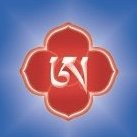
Individual will, reality creation and miracles
ilumairen replied to Nikolai1's topic in General Discussion
And yet, thinking it is our place to determine the time and place of another's awakening is a bit of a dream itself, imo. In that regard we are just further reflections in 'the hall of mirrors'. -

Colors blind the eye / Sounds deafen the ear
manitou replied to manitou's topic in Daoist Discussion
Wow, Steve. Like the baby before it learns to smile. To keep in mind the dream state of our being, to know that we are predominately......nothing. To see the world before the name kicks in. Seems easy to say, impossible to do. Unless one constantly remains in Awareness of the dream. -

Dreaming of the Dead. Spirit encounters in the dreamtime...
ChiForce replied to silent thunder's topic in The Rabbit Hole
Why the distinction? When these beings appear to you, they are as alive as anybody you would encounter in your real life. They are dead because they were once appearing in the physical world but now only in your dream world. I have never dream about spirits or guides until around 17 or 18, when I had my kundalini energy rising experiences, coming out from a dream state in which I was a Han dynasty warrior or Chi master. That was how I learned about how to complete the microcosmic orbit. Subsequently, I have spontaneous Kundalini energy rising experiences for 3 weeks straight. The intense kind..the kind that burn your body up and could potentially making you crazy because of the amount of energy concentrated in the mind or head. Hehehehe Before, I had dreams about my childhood and how horrible they were. That was it. If your friend is scare about death, I would not even bother to tell him about the Tibetan Book of the Dead and the death bardo experience. It would just freak him out more...because to successfully become liberated at death, one has to cultivate NOW, while still alive. Heheheheheheee.... -

Colors blind the eye / Sounds deafen the ear
manitou replied to manitou's topic in Daoist Discussion
Hi mostly_empty - However, when you get back to the reversion of the Dao to the void, does it not come down to the same thing? That one could call it samsara because it reverts back to none other than thought? Our thought? I'm not seeing a huge distinction there. I woke up out of a dream last night, and wrote down what a voice was telling me. This could relate to what the misfortune is that we're speaking of. The voice said "Be one with the pain, realizing that it's not hurting us at all, but merely this shell that we must walk around in." -

Working with higher level subtle beings and spirits
ChiForce replied to Jetsun's topic in General Discussion
To Harmonious Emptiness.....Hahahaha...so true.... It brings back dream memories here..hehehe..... -

Working with higher level subtle beings and spirits
ChiForce replied to Jetsun's topic in General Discussion
May I....?? Been away for a while and haven't been posting..... The question is what does you mind want??? Look, my path was transmitted to me in dreams. Higher, spirit, realized Buddha beings (Sambhogakaya beings to be précised) taught me about the Dharma gate, the Kundalini energy rising, and the microcosmic orbit. I know things and wisdom which would have required extensive studies of the Buddha scriptures to realize. Yet, I can grasp them using my own experiences and insights. I believe the higher your cultivation level you are at, the more you would need to rely on these beings to guide you...maybe because your path is unique and no known masters can guide you...or you are the self enlightened Buddha. The thing about these beings is that they are the reflection of your mind and the quality of your cultivation. I personally do not believe that higher individual beings would manifest themselves to you when your cultivation level, your mind realization, is of lesser realization. The point of the mind nature realization is that all phenomena is the product of your own mind. If so, how can anything exist outside of your mind. How can real higher beings can be perceived by your mind if your mind isn't capable of seeing them the way they are? Of course, regardless what messages they are telling you, you must realize that your mind may not have altered or changed your own surrounding reality. If some beings are teaching you about energy healing and you can't heal anything in your real life, well, you really can not heal, period.... Is simple as that. If your mind cultivation is strong and really grasps the Dharma wisdom, as soon as these beings appear, you mind would wonder and not grasping. Whatever thoughts and visions before you.... would transform into the Clear Light. Your visions or dream visions would switch from imagery representations to a full blown Clear Light realization...your third eye would see only light and nothing more...the nature of your mind itself. Also, once the mind developed the ability to distinguish the reality of these beings, you don't get low level being visitations as much. -

Colors blind the eye / Sounds deafen the ear
manitou replied to manitou's topic in Daoist Discussion
Really nice, Jonesboy. This originally started out as a rumination on Chapter 12, but sort of extended into 13 as well. The operative phrase, for me, in Worldpeace's rendition, at the end of 12, is 'she chooses oneness and distinguishes nothing'. I've been practicing dream yoga lately, in that I remind myself daily, as many times as I can remember, to be aware that this is just a dream. Consequently, the optimal situation is that there is little separation between your nighttime dreams and your daily activities; they merge into one entity of sorts. This is what I was thinking of when the original thought of Ch 12 is that the 5 colors blind the eye, etc; that it is all oneness, that it is all light, and that any specific color, or sound, is merely an elimination of all quantum possibilities of everything else. Sort of looking at all of life 'bass-ackwards', but making sense in a Daoistic or Buddhist sense. I think it does chapter 12 a disservice to see it merely as a question of balance - not too much, not too little, although this is certainly an important aspect of the 3 Treasures. However, I think these interesting chapters, 11, 12, and 13 are saying a bit more. Yes, misfortune arises from being trapped in samsara, as you so eloquently say. Edit: And how do we choose oneness and distinguish nothing, in our everyday given samsara? This is tricky. I believe it is to remain in consciousness that that is the way it is; naturally, sometimes you want to pick up a Hershey bar rather than a pickle, and picking up the wrong one would be an assault to our samsaric senses. Yet, the Enlightened One would know that these are one and the same, the Hershey bar and the pickle; it is only our sense capabilities and definitions that distinguish one from the other. This is illusion, but in the case of the Hershey bar a very tasty one. What an odd tightrope we must walk, for some unknown reason, in this thing called human experience. I have a habit of 'seeing and knowing' that the black spot inside everyone's eyes is 'god'. This is my daily practice that I walk around with. The beggar on the street, the president of a country, a nun, a homicidal maniac. All just 'gods' playing out their part the best they know how. Even the homicidal maniac. Even knowing that if I had the same upbringing, the same conditioning, etc - that I may very well succumb to the same emotional motivation as the homicidal maniac and act out in the very same way. It certainly makes life easier to bear to think this way, and it is aligned with the Dao and the Sutras. It almost enables me to watch Fox News, although I'm not quite at that place of Enlightenment just yet. I've a bit more work to do before that hot stripe stops climbing up my back. But it's a good litmus test. -
So last night I had a dream about people living in a place full of poop and vomit (which is how I sometimes categorize too many words, word vomit - heck too many words can also be diarrhea of the mouth to me). They thought it was good and normal, and the longer I stayed the more I wretched out. It was not what I would call pleasant experience, but it was still experience - which I prefer not to confuse with who I am. (just a happy song)




